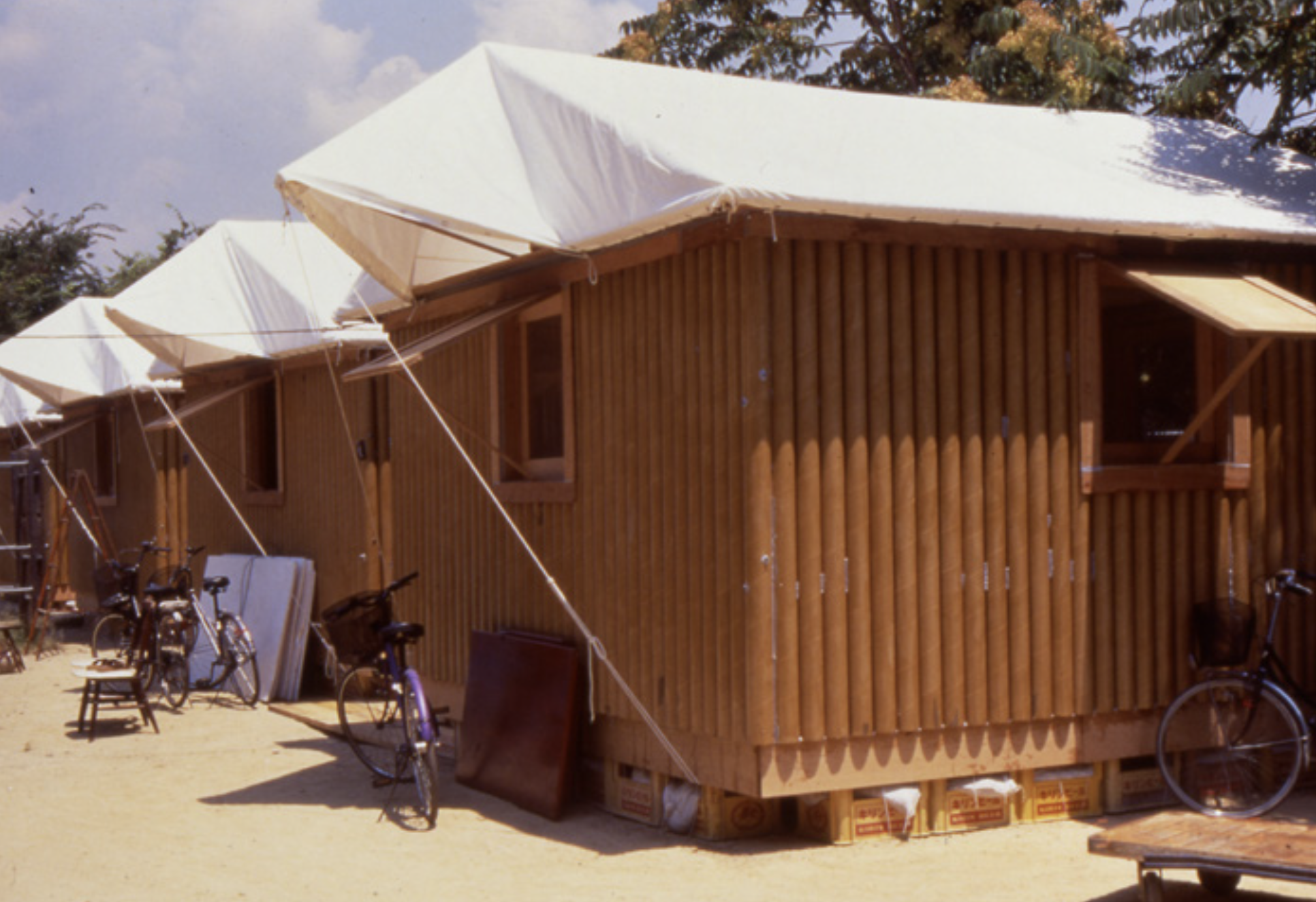Kobe, Japan, 1995

Since the 1994 conflict in Rwanda where Shigeru Ban was a consultant for the United Nations, he has provided humanitarian design as part of relief projects for victims of mass displacement, tsunamis and earthquakes. ‘Paper Log Houses’ are temporary shelters implemented for the first time after the Kobe earthquake in Japan.
The general construction logic is based on the use of prefabricated, eco-friendly, inexpensive materials which are either locally available or recycled, and which can be dry-assembled without the aid of skilled labour. The units do not impact the soil, are easy to dismantle, and the materials can be disposed of or reused.
The basements of these houses are made from recycled beer crates filled with sandbags. Paper tubes are used as load-bearing elements for the floor, walls and roof, while the floor surface is composed of plywood panels. Waterproof sponge is sandwiched between the paper tubes for insulation, and a tenting material covers the roof structure.
Over time, this configuration was adapted to different contexts in Turkey, India, Philippines, and Ecuador, always following the same principles. The result is a shelter of reasonable quality that respects the environmental context, reduces waste materials and saves resources.
